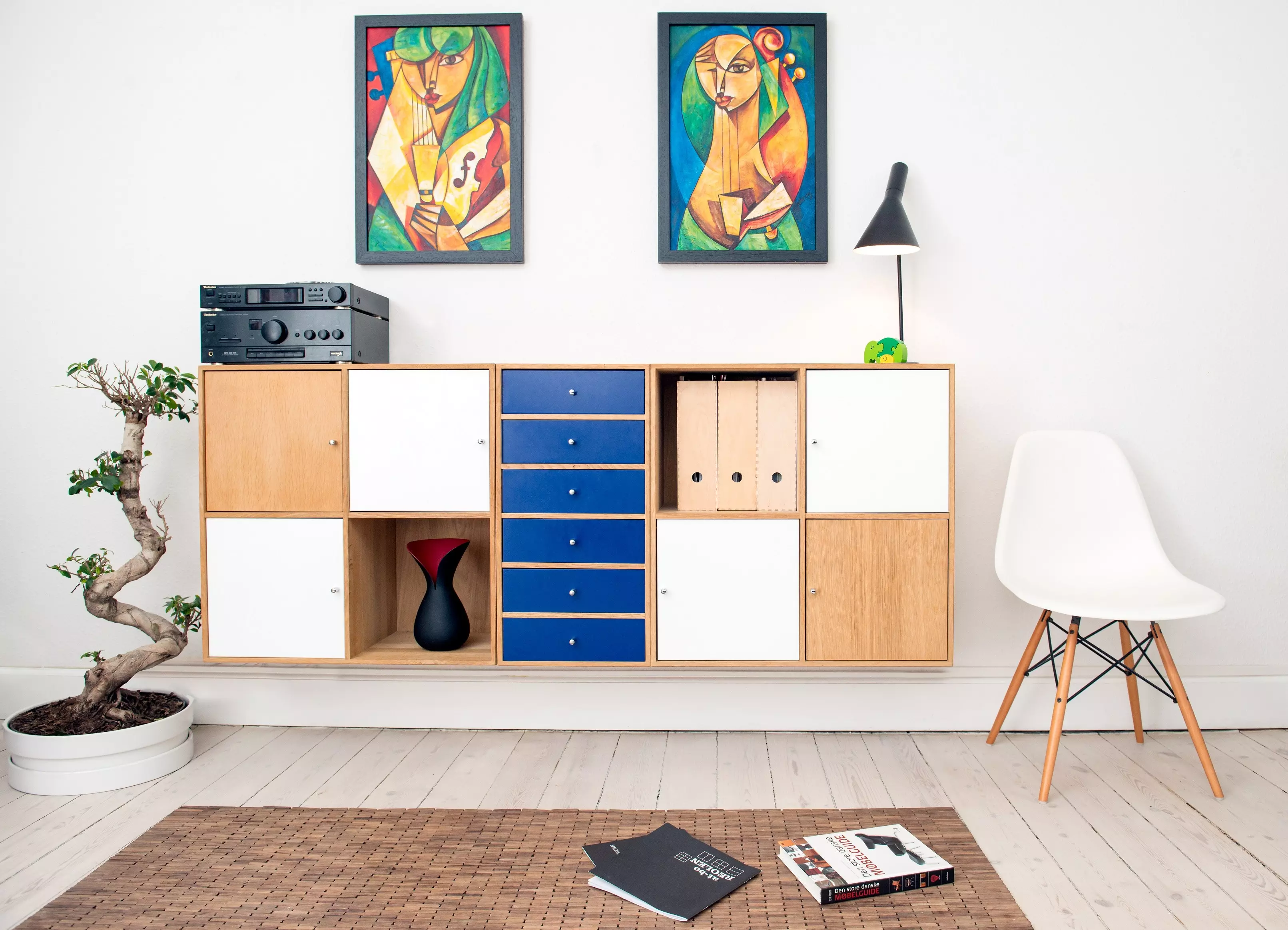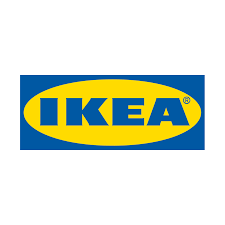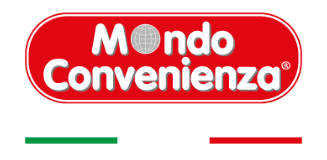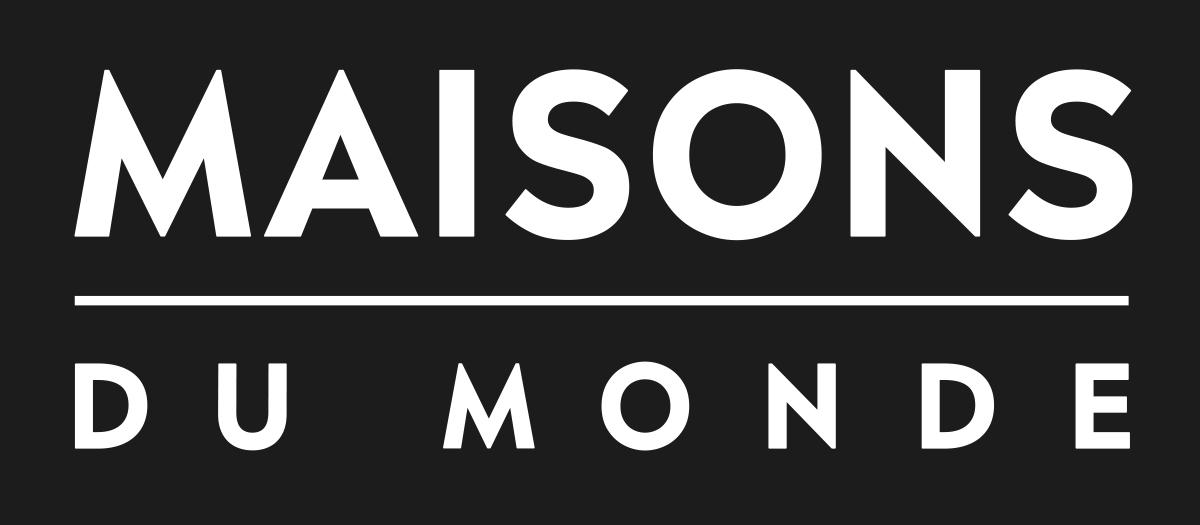Sintesi
The global furniture market, valued at $558.1 billion in 2020, is expected to grow at a compound annual growth rate (CAGR) of 5.1%, reaching $715.6 billion by 2025. The main drivers of this market are increasing urbanization, rising disposable income, the affordability of furniture, growth in the real estate and hospitality sectors, the penetration of build-it-yourself furniture, and demand for luxury furniture in certain sectors. The market is segmented by furniture type, material and application, with residential furniture making up the majority. It's a highly fragmented market with a mix of small and large players, including such notables as Herman Miller, Ikea, and Ashley Furniture Industries.
Italy, as one of the world's leading furniture manufacturers and exporters, saw its market reach almost 20 billion euros, indicating a 4% increase on the previous year. The Italian market, characterized by a strong preference for furniture among the population, consists largely of home furnishings, followed by office furniture, kitchen and garden furniture, and mattresses, occupying smaller portions of the market. Italy is a net exporter of furniture, with significant exports to France, Germany, the USA and the UK, and its market is influenced by national trends, online shopping habits and the growing demand for eco-sustainable products
The Italian furniture market: trends, traditions and transformations
In recent times, the Italian home furnishings market has seen a myriad of trends reflecting the population's changing lifestyles and aesthetic preferences. Traditionally, Italy has been recognized the world over as a center of high-quality furniture manufacturing, a fact borne out by its high export figures. In fact, the country is one of the world's leading furniture exporters, with export values reaching approximately $10-15 billion. The Italian market shows a great affinity for furniture, an observation corroborated by the fact that the country ranks just behind Germany in terms of household furniture expenditure. Italians attach great importance to their domestic environment, particularly the living room, kitchen and dining room, and often devote considerable financial resources to their improvement. Sustainability has become a central theme, with a growing demand for eco-friendly and recycled materials.
In addition, there is a growing trend towards the personalization and individualization of interior design, foreshadowing an evolution from generic to more individualistic, bespoke furniture. Another trend to note is the growing interest in outdoor living spaces, accelerated by the changes inflicted by the COVID-19 pandemic. This segment has seen an increase in demand for versatile, weather-resistant furniture, adding a new level of requirements for manufacturers and sellers. The search for a blend of rustic and industrial design, known as "rustrial", signifies a taste for a fusion of comfort and minimalist industrial appeal.
The advent of e-commerce has not escaped the furnishings market, with a substantial proportion of Italians - around 30% - choosing to buy online or at least to research before making in-store purchases. Significantly, mobile commerce is becoming increasingly widespread, indicating a shift towards consumer behavior that is more comfortable with technology. Despite this move towards online marketplaces, the Italian home furnishings scene remains highly fragmented. With several thousand players, most of them small and medium-sized enterprises operating locally, the market is characterized by its diversity and competitiveness. Major Italian manufacturers, such as Poltronesofà and Natuzzi, maintain a significant presence, while international retailers like Ikea carve out considerable market share.
In conclusion, the Italian furniture market, while steeped in tradition and craftsmanship, is undergoing a transformation influenced by changing consumer preferences, a growing penchant for eco-friendly practices and digital consumerism. These trends serve as pivots for market players, who must navigate through fragmentations and changes to meet the needs of a market that strongly values innovation, personalization and sustainability.
Key players in the Italian furniture market
The Italian furniture market, known for its rich tradition of craftsmanship and design, is home to an eclectic mix of big international names and well-established local giants. Among the major competitors shaping the market, certain names stand out for their reputation, market presence and distinctive product offerings.
- Ikea - A world-famous brand, Ikea has also made its mark in Italy. Known for its affordable, functional do-it-yourself furniture, the Swedish company appeals to a broad public looking for modern, practical design.
- Iris - A name associated with a wide variety of home improvement products, Iris offers a wide range of furniture options that appeal to cost-conscious customers who don't want to compromise on style and reliability.
- Poltronesofà - An Italian company, Poltronesofà specializes in sofas and armchairs. Its emphasis on comfort, combined with an Italian flair for aesthetics, makes it a popular choice among those seeking a blend of functionality and design.
- Natuzzi - Renowned for its luxury leather furniture, Natuzzi is the emblem of Italian craftsmanship. With products that exude elegance and sophistication, Natuzzi caters to the high-end segment of the market.
- Château d'Ax - Another staple of the luxury furniture sector, Château d'Ax offers an exquisite range of products renowned for the quality of their materials and their timeless design, attracting a clientele with a penchant for opulence and comfort.
- Armani Furniture - When haute couture meets furniture design, Armani Furniture is the result. This high-end brand offers furniture and home accessories that reflect the sophisticated, minimalist ethos of the iconic fashion house.
- Zanaboni - A brand renowned for its classic furniture, Zanaboni offers pieces rich in detail and steeped in tradition, appealing to lovers of ornamentation and history.
- Roche Bobois - Although a French brand, Roche Bobois also enjoys great popularity in Italy, where it is renowned for its innovative, high-end furniture, often featuring bold, contemporary designs.
- Design Holding - Italy's largest manufacturer of furniture and design, Design Holding boasts a portfolio of prestigious brands and has carved out a significant market share thanks to its varied, high-end offering.
- Leroy Merlin - Originally a French retailer, but with a strong presence in Italy, Leroy Merlin extends its DIY approach to home furnishings. Its stores offer a range of products that enable customers to personalize their homes.
per comprendere questo mercato
Dettaglio del contenuto
 Informazioni
Informazioni
- Pagine : 30 pags
- Formato : Versione PDF e digitale
- Ultimo aggiornamento : 25/03/2024
 Riepilogo ed estratti
Riepilogo ed estratti
1 Market Summary
1.1 Definition and presentation
The furniture market includes different types of accessories:
- Furniture (tables, sideboards and other cabinets);
- Kitchen furniture;
- Upholstered furniture (sofas, armchairs and benches);
- Bedding;
- Bathroom furniture;
- Garden furniture;
The furniture market in Italy continues to perform well, dictated by both domestic consumption and strong exports-Italy is among the world's top furniture producers. Because of the very long lifespan of furniture, brands are therefore relying on three factors to increase their sales: fashion (especially kitchen), new housing construction, and population mobility. In a market that has historically been controlled by players in physical stores (e.g., Ikea, Leroy Merlin), traditional brands are increasingly finding themselves struggling in response to the rise of online and second-hand trade.
The following study covers the following products: furniture, kitchen furniture, sofas, armchairs and benches, bedding, bathroom furniture, and garden furniture. We explicitly exclude complementary products such as decorative items, lighting, appliances, and tableware from this market.
1.2 The global market
In ****, the world home furniture market is estimated at $***.** billion. Good growth in the industry is expected in the near future. A compound annual growth rate (***) of *.**% is estimated for the period ****-****, thanks to which the market could reach a total value of more than $*** billion by the end of ...
1.3 The Italian market
The furniture and furnishings sector represents one of the main segments of the Italian manufacturing industry. Between **** and ****, the total turnover of enterprises under Ateco Code ** "Manufacture of furniture" increased from **.** billion euro to **.* billion euro, marking a growth of **.* percent. The trend is positive throughout the entire period with the ...
1.4 Import - Export
In order to analyze Italy's trade flows related to the furniture segment, the import-export of products under HS Code **** are analyzed.
Italy ranks internationally as a net exporter of furniture. In fact, analyzing the export coverage index, determined by the ratio of exports to imports multiplied by ***, shows values always above ...
1.5 The consequences of the Russian-Ukrainian conflict
The outbreak of the Russian-Ukrainian conflict in February **** led to, among other things, a general increase in price indexes. The sector related to home furnishings and furniture is not exempt from such increases. Analyzing the consumer price index for household furniture between **** and **** shows an increase of **.* points. This means that ...
2 Demand analysis
2.1 Demand in Italy
The graph shows the year-on-year percentage change in furniture sales volumes in Italy from **** to ****. There is modest growth in **** and ****, followed by a marked decrease in ****. In ****, there was a significant recovery with a **.* percent increase. However, in the next two years, there is a return to decline, with sales ...
2.2 Demand drivers
The graph displays criteria for purchasing household furniture in Italy in ****, showing the percentage of the total sample and the youth aged **-** who consider each criterion. Price and quality are the top considerations for both groups. Features, how the furniture looks with the rest of the house, and style also ...
2.3 Geographical distribution of demand
In order to analyze the geographical distribution of demand for household furniture, two maps were created: the first depicting the geographical distribution of total consumption for furniture purchase and the second with the average monthly household expenditure on furniture purchase.
Regarding the first aspect, in **** the Northwest of the country collects ...
2.4 New demand trends
The growing demand for sustainable furniture reflects a broader environmental awareness and a desire among consumers to contribute positively to the planet through their purchasing choices. This trend is manifested in several trends and practices in the furniture industry. First, there is a strong emphasis on sustainable materials. Manufacturers are moving ...
3 Market structure
3.1 The market structure
In order to analyze the structure of the furniture market in Italy, active enterprises under Ateco Code ** "Manufacture of furniture" are analyzed. In particular, the number of enterprises and the number of employees in the industry as well as the legal form of different activities are analyzed.
Number of enterprises
Between ...
3.2 The value chain
3.3 The main manufacturers
Furniture manufacturing
Friul Intaglia Industries s.p.a: is a leading Italian company in the furniture industry, known for producing high-quality wood components. Founded in ****, it has distinguished itself over time for innovation and excellence in the design and manufacture of complex furniture parts, panels and accessories. Based in the heart ...
3.4 A focus on distribution
Between **** and ****, the total number of businesses active in household furniture retailing (***) appears to be decreasing. During the period analyzed, the number of businesses decreased from ***** to *****, marking a contraction of *.*%. The trend is negative during the entire period and the individual annual changes show homogeneous values, indicating a gradual decline ...
4 Supply analysis
4.1 Type of the offer
The furniture market includes a wide variety of products, which are summarized below (***):
Beds and mattresses Upholstered sofas and armchairs Tables, desks and bedside tables Chairs Bathroom furniture Kitchen furniture Storage units: bookcases, cupboards, cabinets Home accessories: pillows, rugs, mirrors, pictures, vases, lamps, chandeliers, lighting, etc.
In addition, these products can ...
4.2 The prices
In order to analyze the prices of home furniture in Italy, consumer price indexes for different types of products between **** and **** are considered
Regarding the consumption of home furniture in general, there is a marked increase in the price index between **** and ****. During the period analyzed, the value of the index ...
4.3 Focus on armchairs and ottomans
Armchairs and Poufs
4.4 New supply trends: circularity
The supply of secondhand furniture is booming, fueled both by the growing interest in sustainable consumption and the search for unique pieces with character and history. This trend reflects an increased ecological awareness and a desire to give objects new life, while reducing waste generation and encouraging the circular economy. Secondhand ...
5 Rules and regulations
5.1 General regulations
There are several bodies responsible for the development of standards projects:
CEN (***) in Europe ISO (***) worldwide
cEN and ISO are responsible for developing European and worldwide standards in line with market needs, but there is a standards body for each country. Worldwide, ISO has already developed nearly **,*** international standards and continues ...
5.2 National, regional and municipal regulations
In Italy there are furniture regulations that apply nationwide. Regions and municipalities often act at their own discretion.
At the national level there are numerous laws, rules and decrees that deal with issues such as environmental cleanliness of furniture and fire hazards. The following is a non-exhaustive list:
Presidential Decree No. ...
6 Positioning of actors
6.1 Segmentation
Furniture manufacturers
Manufacturers of sofas and armchairs
- Natuzzi s.p.a
- Poltrona Frau s.p.a
- Minotti s.p.a
- Friul Intaglia Industries s.p.a
- Poliform s.p.a
- Imab Group s.p.a
- Giessegi Industria Mobili s.p.a
- Cassina s.p.a
- Gruppo Turi s.r.l
- Ikea (Ikea Italia Retail s.r.l)
- Iris Mobili (Mondo Convenienza)
- Maisons du Monde
 Grafica
Grafica
- Mercato dei mobili per la casa
- Mercato dei mobili per la casa
- Mercato dell'arredamento, ripartizione per tipologia di prodotto
- Valore e volume della produzione venduta di sedie e sedili imbottiti, con intelaiatura di legno per uffici ed altri usi (Codice Prodcom 31001250"
- Spesa totale delle famiglie per arredo, mobili e tappeti
Tutti i nostri studi sono disponibili online e in PDF
Ti invitiamo a consultare un esempio del nostro lavoro di studio su altri mercato!
ultime novità
Aziende citate in questo studio
Questo studio contiene un panorama completo di società di mercato con le ultime cifre e le notizie di ogni azienda :
 Perché Scegliere Questo Studio :
Perché Scegliere Questo Studio :
Accedi a più di 35 ore di lavoro
I nostri studi sono il risultato di oltre 35 ore di ricerca e analisi. L'uso dei nostri studi ti consente di dedicare più tempo e aggiungere valore ai tuoi progetti.
Approfitta di 6 anni di esperienza e oltre 1.500 studi settoriali già prodotti
La nostra competenza ci consente di produrre studi completi in tutti i settori, inclusi i mercati di nicchia o emergenti.
Il nostro know-how e la nostra metodologia ci consentono di produrre studi con un valore unico di denaro
Accedi a diverse migliaia di articoli e dati a pagamento
BusinessCoot ha accesso all'intera stampa economica a pagamento e ai database esclusivi per svolgere studi di mercato (+ 30.000 articoli privati e fonti).
Al fine di arricchire i nostri studi, i nostri analisti utilizzano anche indicatori Web (semrush, tendenze, ecc.) Per identificare le tendenze in un mercato e strategie aziendali. (Consulta le nostre fonti a pagamento)
Supporto garantito dopo l'acquisto
Una squadra dedicata al servizio post-vendita, per garantirti un alto livello di soddisfazione. +39 380 247 7810
Un formato digitale progettato per i nostri utenti
Accedi a un PDF ma anche una versione digitale per i nostri clienti. Questa versione consente di accedere a fonti, dati in formato Excel e grafica. Il contenuto dello studio può quindi essere facilmente recuperato e adattato per i tuoi supporti.
 Le nostre offerte :
Le nostre offerte :
the furniture market | Italy
- Quali sono i dati relativi alle dimensioni e alla crescita del mercato?
- Cosa sta influenzando l'andamento e l'evoluzione del mercato?
- Qual'è il posizionamento degli attori di mercato?
- Segmentazione e profilo delle aziende operanti nel mercato
- Dati e numeri da una molteplicità di fonti
Pacchetto di 5 studi (-15%) IT Italy
- 5 rapporti a 75,6 € IVA esclusa per studio da scegliere dal nostro catalogo italiano per 12 mesi
- Risparmiare il 15% sugli studi aggiuntivi acquistati
- Scegliere il rimborso del credito non utilizzato al termine dei 12 mesi (durata del pacchetto).
Consulta i termini e le condizioni del pack e del rimborso del credito non utilizzato.





 IKEA TORNA ALLA DESIGN WEEK DI MILANO - 25/03/2024
IKEA TORNA ALLA DESIGN WEEK DI MILANO - 25/03/2024
 Mondo Convenienza: un nuovo accordo con i Sindacati - 11/03/2024
Mondo Convenienza: un nuovo accordo con i Sindacati - 11/03/2024






















